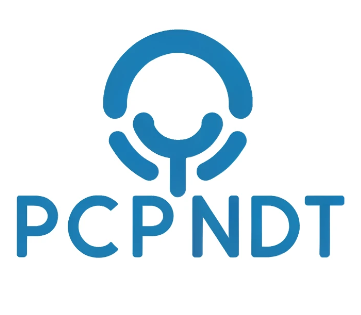Captive Insurance vs Micro Captive: Captive Insurance is suitable for larger corporations with diverse risk profiles, offering control and cost savings. Micro Captive Insurance caters to smaller businesses with specific, niche risks, providing tailored coverage and potential tax benefits. Both options allow companies to self-insure against unique risks, with Captive Insurance offering broader coverage and Micro Captive focusing on specialized risks.
In the world of insurance, businesses often explore alternative risk management strategies to protect themselves against potential financial losses. Two popular options that companies consider are Captive Insurance and Micro Captive Insurance. While both serve the purpose of self-insuring certain risks, there are key differences between the two that businesses should understand before making a decision.

What is Captive Insurance?
Captive insurance involves a subsidiary company established by a parent company to provide insurance coverage for the parent company’s risks. Captive-insurance companies can insure the risks of the parent company and its affiliates, offering more control over the insurance process and potentially leading to cost savings in the long run. Captive insurance is typically used by larger corporations with significant risk exposure.
Pros
- Control: The company has more control over risk selection, claims handling, and investment strategies for their insurance needs.
- Profit Potential: If losses are lower than expected, the captive generates a surplus, which can be returned to the owners as dividends.
- Tailored Coverage: Captives can provide coverage for unique or hard-to-place risks that traditional insurers might not offer.
Cons
- Cost: Setting up and maintaining a captive can be expensive, with ongoing regulatory and compliance costs.
- Expertise: Managing a captive effectively requires specialized knowledge and resources.
What is Micro Captive Insurance?
Micro Captive Insurance, on the other hand, is a smaller version of a captive insurance company that is designed for businesses with lower risk profiles. They are often used by small to medium-sized enterprises to self-insure specific risks that traditional insurers may not cover or offer at a high cost. Micro captives can provide tailored insurance solutions and potential tax benefits for qualifying businesses.
Pros
- Lower Cost Entry Point: Micro captives are more affordable to establish and maintain compared to traditional captives.
- Simpler Regulations: They may benefit from streamlined regulatory requirements, making them easier to manage.
- Tax Benefits: Under specific tax code sections (e.g., Section 831(b) in the US), micro captives may enjoy tax advantages on underwriting income.
Cons
- Limited Capacity: Due to their smaller size, they may not be able to handle high-value or complex risks.
- Less Diversification: With fewer members, micro captives may have less risk diversification compared to larger captives.
Captive Insurance vs Micro Captive
| Aspect | Captive Insurance | Micro Captive |
|---|---|---|
| Ownership and Control | Wholly owned by parent organization or related group | Often single owner; smaller scale |
| Purpose | Cover specific risks not addressed by traditional insurance | Tailored coverage for unique needs |
| Premiums and Risk Pooling | Based on risk exposure; can pool risks across subsidiaries | Smaller premiums; limited risk pooling |
| Regulation | Regulated as legitimate insurers | Must meet criteria beyond premium threshold |
| Tax Benefits | Not a primary focus; tax treatment varies | Takes advantage of IRC Section 831(b) |
| Challenges | Less controversy; established practice | Some misuse as tax shelters; scrutiny |
Risk Coverage in Captive Insurance
In Captive Insurance, companies can cover a wide range of risks tailored to their specific needs, including property, casualty, liability, and other specialized risks. Captive Insurance allows for customization and flexibility in designing insurance programs to address unique risks that traditional insurers may not cover.
Risk Coverage in Micro Captive
Micro Captive Insurance focuses on specific risks that are relevant to smaller businesses, such as cyber liability, professional liability, employee benefits, and other niche risks. Micro captives offer tailored insurance solutions that may not be readily available or affordable through traditional insurance providers, allowing businesses to self-insure against specific risks that are critical to their operations.
How to choose the right one?
- Risk Profile: Assess the specific risks your business faces and determine whether a traditional insurance policy adequately covers them. If your risks are unique or not easily insurable through traditional means, a captive insurance solution may be more suitable.
- Financial Considerations: Evaluate your company’s financial stability and capacity to fund an insurance program. Captive insurance typically requires a significant upfront investment and ongoing capitalization, while micro captives may offer a more affordable alternative for smaller businesses.
- Regulatory Environment: Understand the regulatory requirements for both captive insurance and micro captives in your jurisdiction. Ensure compliance with all regulations and consider the level of oversight and reporting obligations associated with each option.
- Control and Customization: Consider how much control you want over your insurance program and the level of customization needed to address your specific risks. Captive insurance provides greater control and flexibility in designing insurance solutions, while micro captives offer tailored coverage for smaller businesses.
- Tax Implications: Consult with tax professionals to understand the potential tax benefits associated with captive insurance or micro captives. Each option may offer tax advantages that can impact your overall cost of risk management.
- Long-Term Strategy: Align your choice of insurance solution with your company’s long-term strategic goals. Consider how captive insurance or micro captives fit into your overall risk management strategy and whether they support your business objectives.
- Professional Advice: Seek guidance from insurance experts, risk management consultants, and legal advisors with experience in captive insurance and micro captives. They can help you navigate the complexities of these alternative insurance solutions and make an informed decision based on your unique circumstances.
Conclusion
Captive Insurance vs Micro Captive, while captive insurance provides flexibility and risk management control, micro captives have faced scrutiny due to abusive practices. Organizations should carefully consider their goals and compliance when exploring these options.
